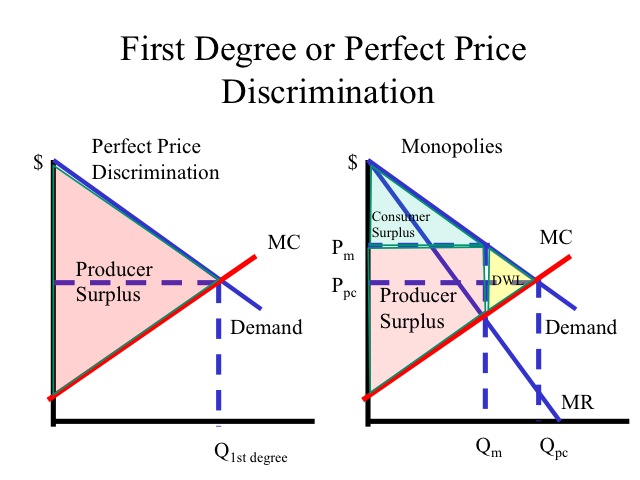Although deadweight loss is created the government establishes a price ceiling to protect consumers. A deadweight loss represents wealth that was never created.

Deadweight Loss Refers To The Loss Of Economic Efficiency When The Equilibrium Outcome Is Not Achievable Or Not Achieved Economic Efficiency Loss Floor Price
In this topic discusses an unintended consequence of price ceilings deadweight loss.

Deadweight loss in price ceiling. Price Ceilings and Price Floors Module 1. If demand shifts from D0 to D1 the new equilibrium would be at E1unless a price ceiling prevents the price from rising. Inefficiency of Price Ceilings.
Note that the gain to consumers is less than the loss to producers which is just another way of seeing the deadweight loss. Supply Demand and Equilibrium. Producers are only willing to supply fewer goods Q1 than they should Qe because they have to bear lower prices.
When transactions dont take place consumers and producers dont receive the benefits of those transactions. The original intersection of demand and supply occurs at E0. Deadweight losses primarily arise from an inefficient allocation of resources created by various interventions such as price ceilings price floors monopolies and taxes.
In the absence of externalities both the price floor and price ceiling cause deadweight loss since they change the market quantity from what would occur in equilibrium. P shows the legal price the government has set but MB shows the price the marginal consumer is willing to pay at Q which is the quantity that the industry is willing to supply. The government sets a limit on how low a price can be charged for a good or service.
To calculate deadweight loss youll need to know the change in price and the change in the quantity of a product or service. Some of the major causes of deadweight losses include rent control price ceiling minimum wage price floor and taxation. In effect the price floor causes the area H to be transferred from consumer to producer surplus but also causes a deadweight loss of J K.
Regardless in economics those benefits are wealth that could have been used for something else. The loss in social surplus that occurs when the economy produces at an inefficient quantity is called deadweight loss. This inefficiency is equal to the deadweight welfare loss.
In other words it is an ineffective outcome. An example of a price floor would be minimum wage. In the absence of externalities both the price floor and price ceiling cause deadweight loss since they change the market quantity from what would occur in equilibrium.
These factors lead to. The graph shows a shift in demand with a price ceiling. If the price is not permitted.
Use the following formula. As a result of the transfer of consumer surplus to producers or producer surplus to consumers two changes occur. A price ceiling creates deadweight loss Deadweight Loss Deadweight loss refers to the loss of economic efficiency when the optimal level of supply and demand are not achieved.
In other words the price ceiling transfers the area of surplus V from producers to consumers. Causes of Deadweight Loss. To do this the maximum price is placed below the market equilibrium to halt the market forces from pushing up the price to.
This graph shows a price ceiling. An example of a price ceiling would be rent control setting a maximum amount of money that a landlord can collect. A price ceiling is a maximum legal price which set by the government.
The price ceiling can also create deadweight losses. Two extensions are gi. The government sets a limit on how high a price can be charged for a good or service.
This is accompanied by a transfer of surplus from one player to another. In other words deadweight loss indicates that the economic welfare of society is not at its optimum level. This video shows using equations and graphs how to find consumer surplus producer surplus and deadweight loss from a price ceiling.
It is a concept that can be difficult to observe in real life. First an inefficient outcome occurs and the total surplus of society is reduced. This analysis shows that a price ceiling like a law establishing rent controls will transfer some producer surplus to consumerswhich helps to.
Since MB P MC a deadweight welfare loss. After the price ceiling is imposed the new consumer surplus is T V while the new producer surplus is X. The market is experiencing shortages.
This is accompanied by a transfer of surplus from one player to another.

The Market For Loanable Funds Is Used To Determine The Equilibrium Interest Rate See Http Econ101help Com The Market Interesting Things Interest Rates Fund

Function Dilations How To Recognize And Analyze Them Dilations Writing Services Essay Writing

Economicsfun Youtube Floor Ceiling Economics Consumers

This Graphic Is Useful For Microeconomics And Deadweight Loss With Images Economics Lessons Teaching Economics Microeconomics Study

International Trade Monopolistic Competition Krugman Intra Industry Trading Competition Macroeconomics

Economics Isocost Line Line Economics Thing 1

How Price Floors Reduce Social Surplus Mathematics Chart Bar Chart

Sales Tax Elasticity Tax Burden Tax Incidence Sales Tax Tax Burden

Change In Supply Economics Lessons Economics Supply

Price Floor Economics Supply Economy

Question From Www Econ101help Com Suppose The Government Borrows 20 Billion More Next Year Than This Year This Or That Questions The Borrowers Negativity

Deadweight Loss Economics Lessons Teaching Economics Microeconomics Study

Change In Consumer And Producer Surplus With A Price Ceiling Mathematics Economics Chart





0 komentar:
Posting Komentar